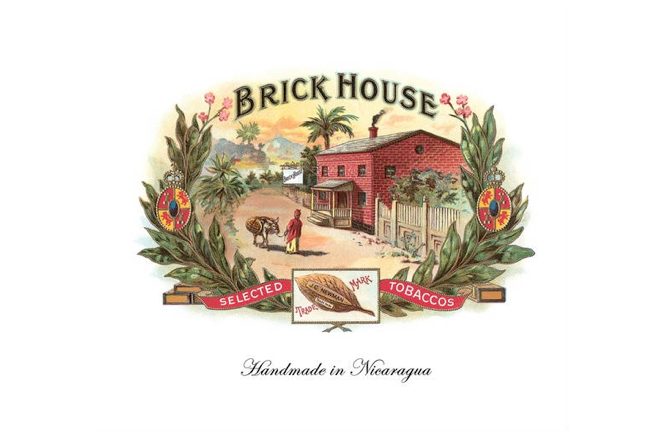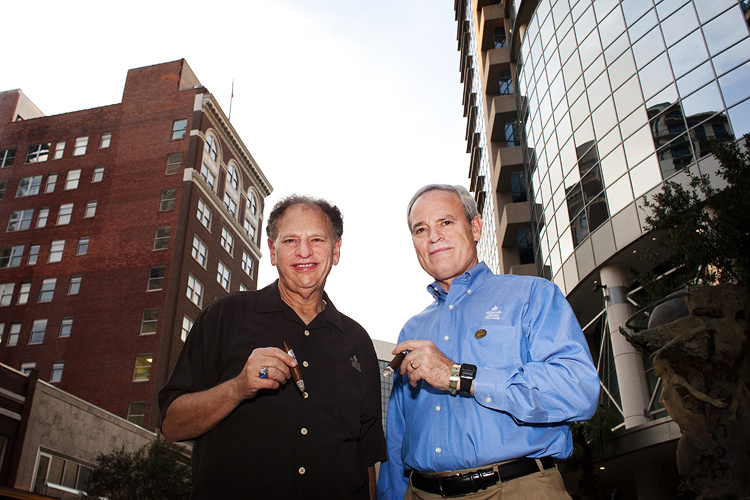A good chunk of the cigar industry is made up of family businesses like J.C. Newman is. Regardless of the ownership situation, a good number of companies have a family tree of their cigars. Just like with biological families, blends in a company’s portfolio can be related to each other in a number of ways.
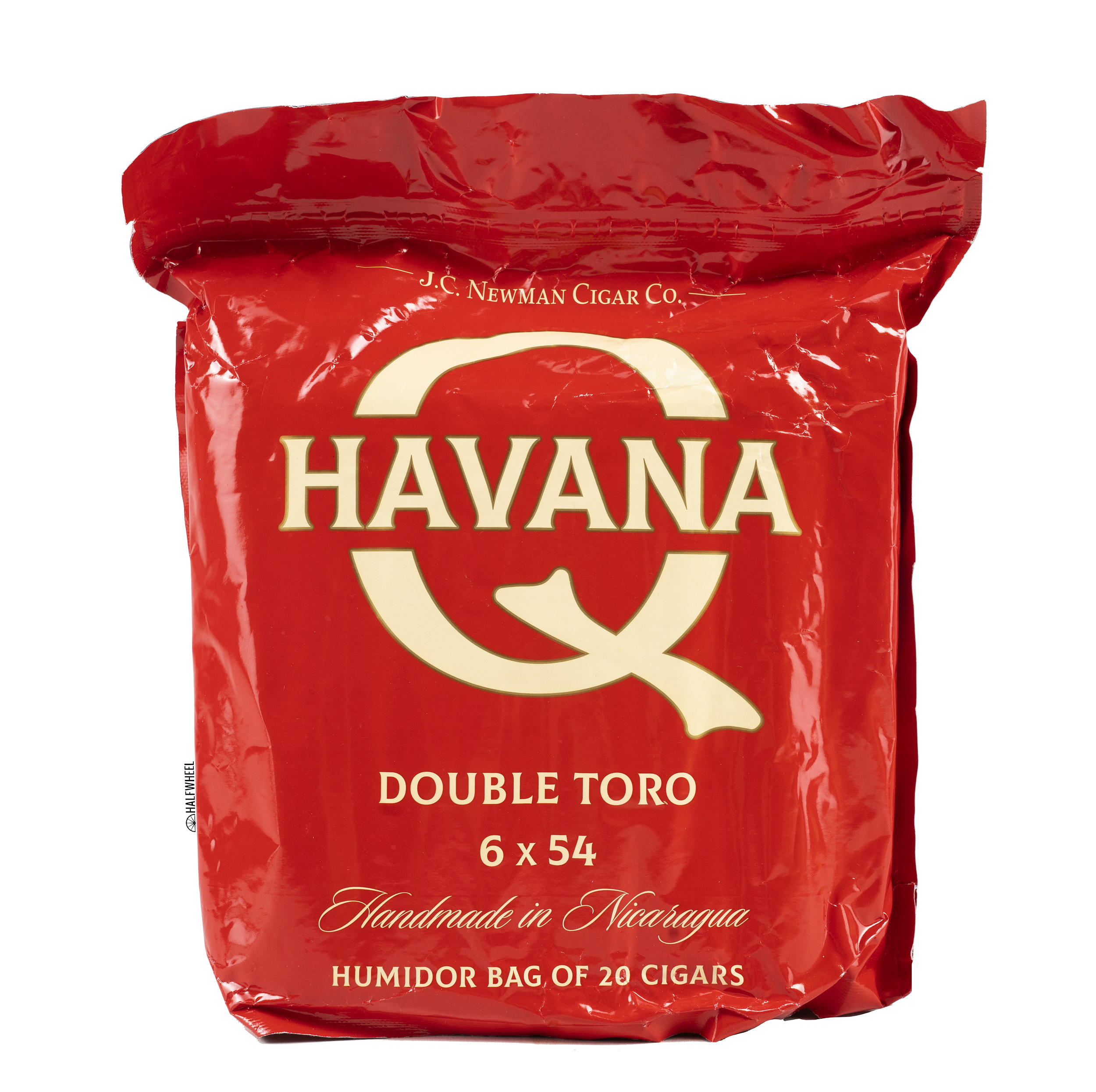

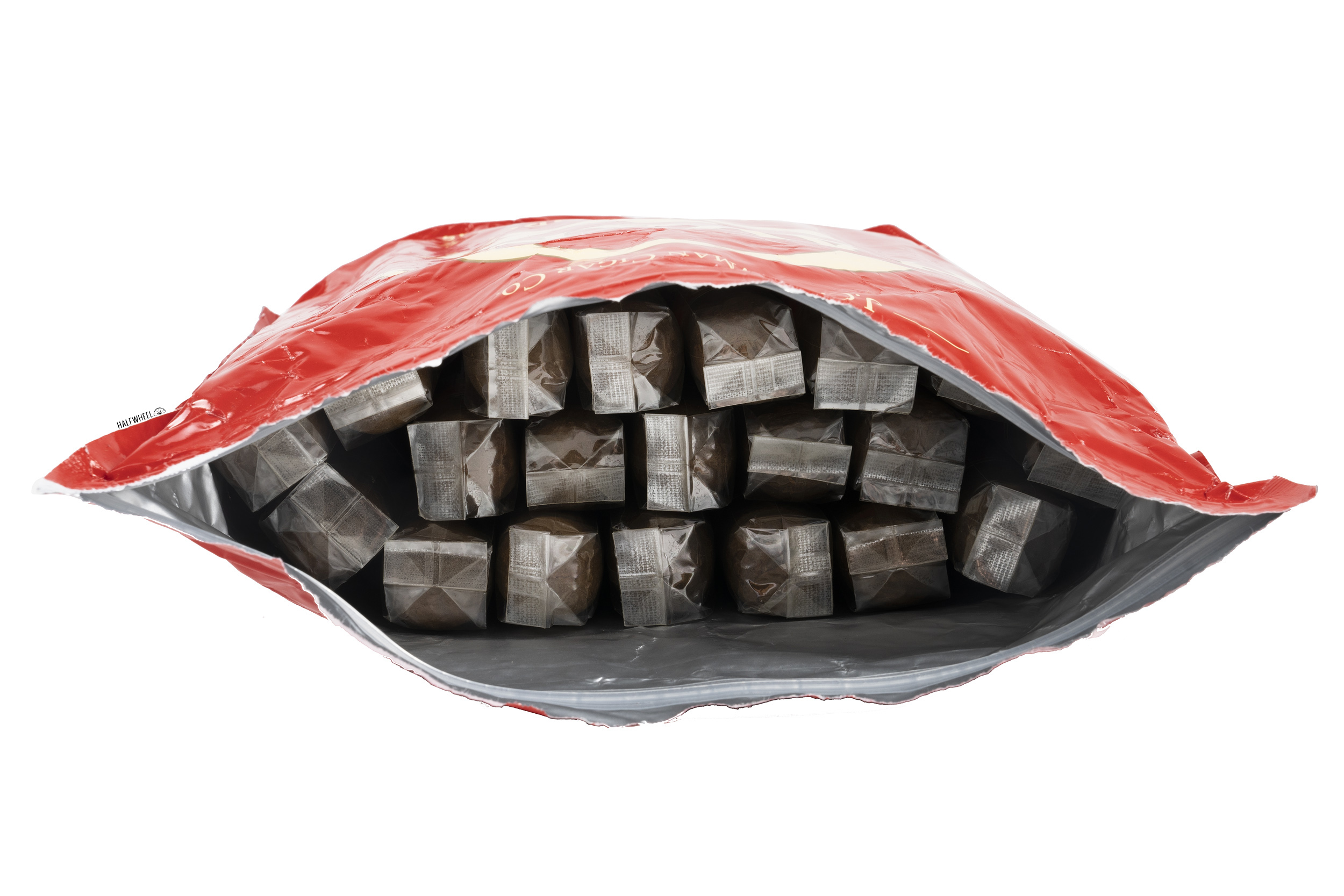
In the case of J.C. Newman’s newest line, the company says that Havana Q is “a cousin” of the Quorum brand, acknowledging that it is a value brand but that pointing out some differences. First, it comes in larger ring gauges that “cater to the modern cigar smoker’s contemporary preferences.” It is also sold in resealable, humidified bags as opposed to bundles, meaning that buyers don’t need to move these into a humidor once they take out the first cigars.
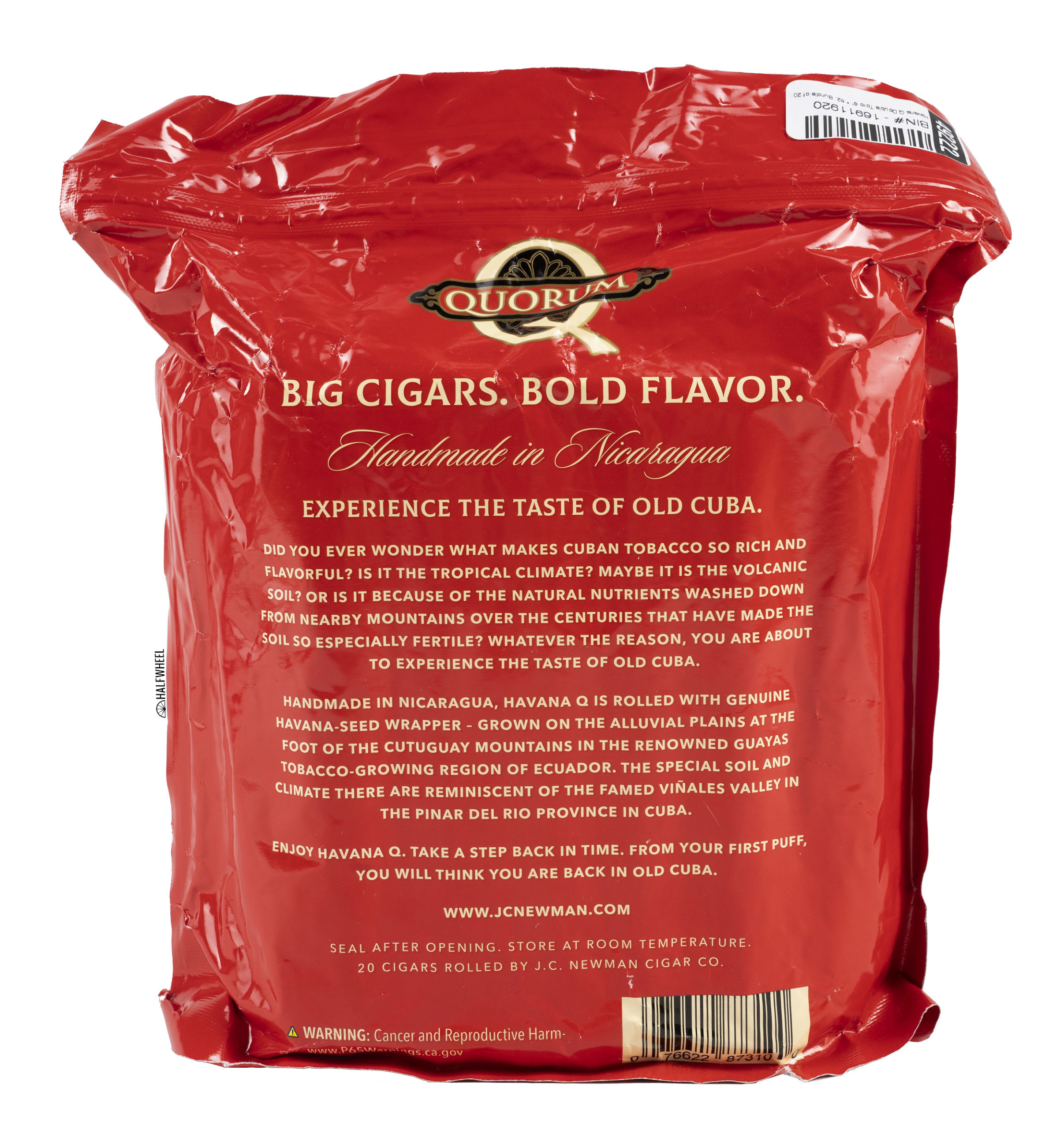
While the name of the cigar seemingly calls Cuba to mind, the blend doesn’t feature Cuban tobacco, though the wrapper is an Ecuadorian Havana seed leaf. Underneath that are a binder and filler made of Nicaraguan tobacco. It’s a blend that the company says allows you to “experience the taste of Cuba.” That’s because it comes from the “alluvial plains at the foot of the Cotuguay Mountains in the renowned Guayas tobacco-growing region of Ecuador,” which it goes on to say that “the special soil and climate there are comparable to the famed Viñales Valley in the Pinar del Rio province in Cuba.”
The Havana Q line is available in four sizes, all with the name Double, since they are larger ring gauges than what is offered in the original Quorum brand:
- Havana Q Double Robusto (5 x 56) — $2.70 (Bundle of 20, $54)
- Havana Q Double Toro (6 x 54) — $2.85 (Bundle of 20, $57)
- Havana Q Double Churchill (7 x 52) — $3.05 (Bundle of 20, $61)
- Havana Q Double Grande (6 x 60) — $3.30 (Bundle of 20, $66)
Production is handled by the J.C. Newman PENSA factory in Estelí, Nicaragua. The line began shipping in October 2020.
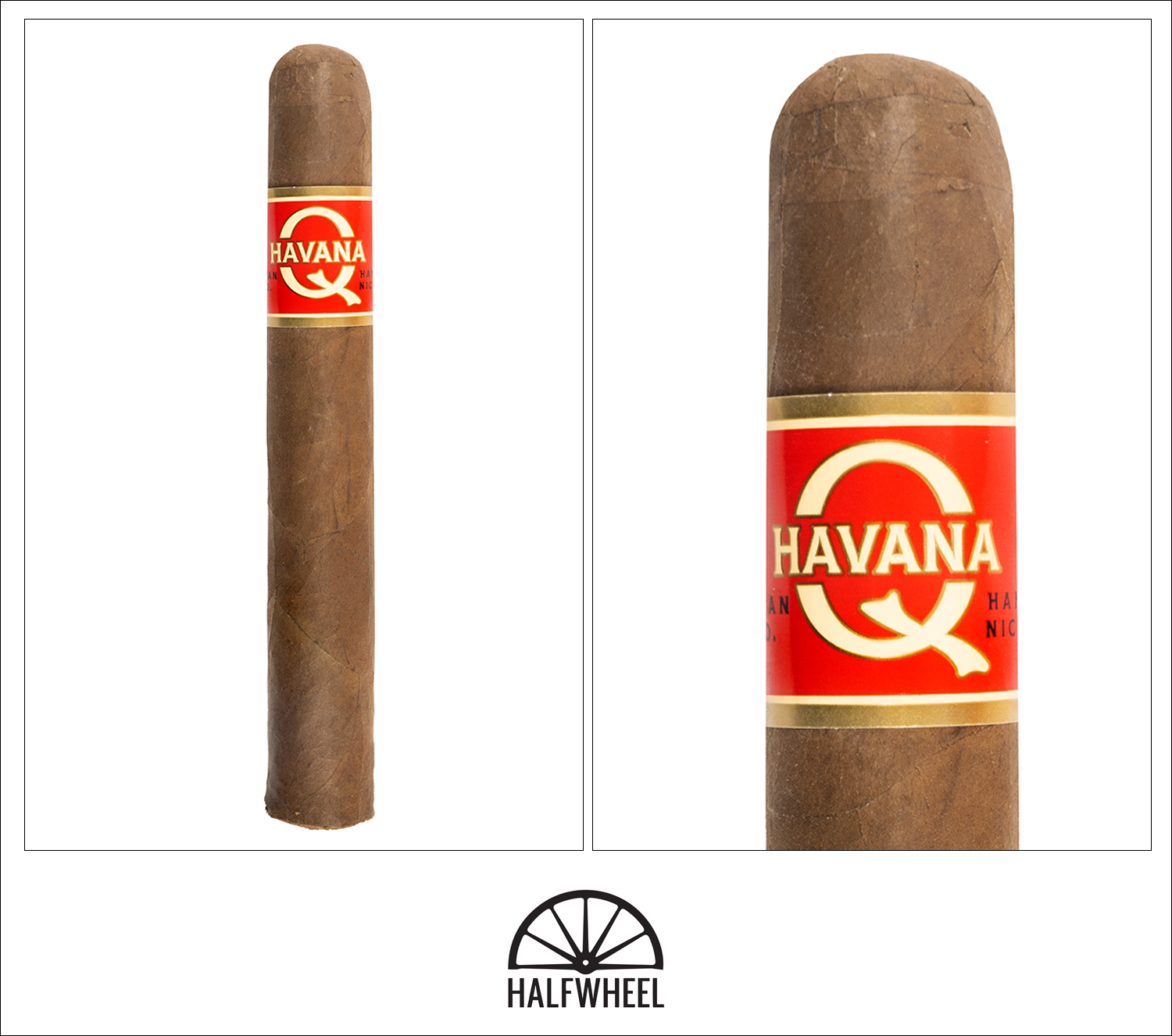
- Cigar Reviewed: Havana Q Double Toro
- Country of Origin: Nicaragua
- Factory: J.C. Newman PENSA
- Wrapper: Ecuador
- Binder: Nicaragua
- Filler: Nicaragua
- Length: 6 Inches
- Ring Gauge: 54
- Vitola: Toro Extra
- MSRP: $2.85 (Bag of 20, $57)
- Release Date: October 2020
- Number of Cigars Released: Regular Production
- Number of Cigars Smoked For Review: 3
The first thing I notice about the Havana Q Double Toro is how very firmly rolled it is, and while I want to give it a firmer squeeze, the delicateness of the wrapper quickly makes me rethink that approach. The wrapper may not be the prettiest one I have ever seen but at first glance it is on par with pretty much any cigar I would expect to see in a humidor. The veins are very flat, seams are almost invisible, the there’s just enough mottling in the color to give it a bit uniform irregularity. Closer inspection reveals some smaller imperfections, such as pin-sized holes that dot one cigar in particular. The band feels like it’s placed a bit higher up than the industry average, one of those things that isn’t a huge issue until you smoke a fair number of cigars and notice the difference of a few millimeters. I pick up a first aroma that sits somewhere between orange juice and a floral note, reminding me of having a light and somewhat fruity cocktail slid in front of me. There’s a bit of sausage meatiness behind that, and just touches of pepper, dry earth and dry, old wood lingering in the background. For some reason the construction of the head of the first doesn’t allow my scissors to get a clean cut, so I do a bit more of a gradual trim, which the fragile leaf does not seem to care for nor be able to endure. Each of the three samples suffers some damage when cut, usually a wrap of tobacco cracking or coming loose. The cold draw is a bit firm with a very neutral, almost nondescript flavor, though I do get a bit of peanut and occasional woodiness.
The first puffs of the Havana Q Double Toro have a light woodiness to them and seem like they are trying to deliver a bit of cedar sweetness, though they don’t quite realize that goal. It’s an approachable if not overly flavorful beginning to the cigar, sort of like the house coffee at most restaurants in terms of how the flavors hit the palate. After the first clump of ash gets knocked off, the cigar begins to show some changes in flavor, picking up a very light nuttiness, while retrohales get a bit heavier and more pepper-dominant. There is also an interesting sensation from the finish that reminds me a bit of the effervescence of Champagne, though purely from a physical sensation. Some issues with the wrapper’s fragility surface during the first third, though the cigar keeps it together fairly well. While it might not be the most refined of profiles, the Havana Q is off to a pretty good start, especially for a value-priced bundle cigar. Flavor and body are a decent medium to medium-plus, while strength is a bit under medium.
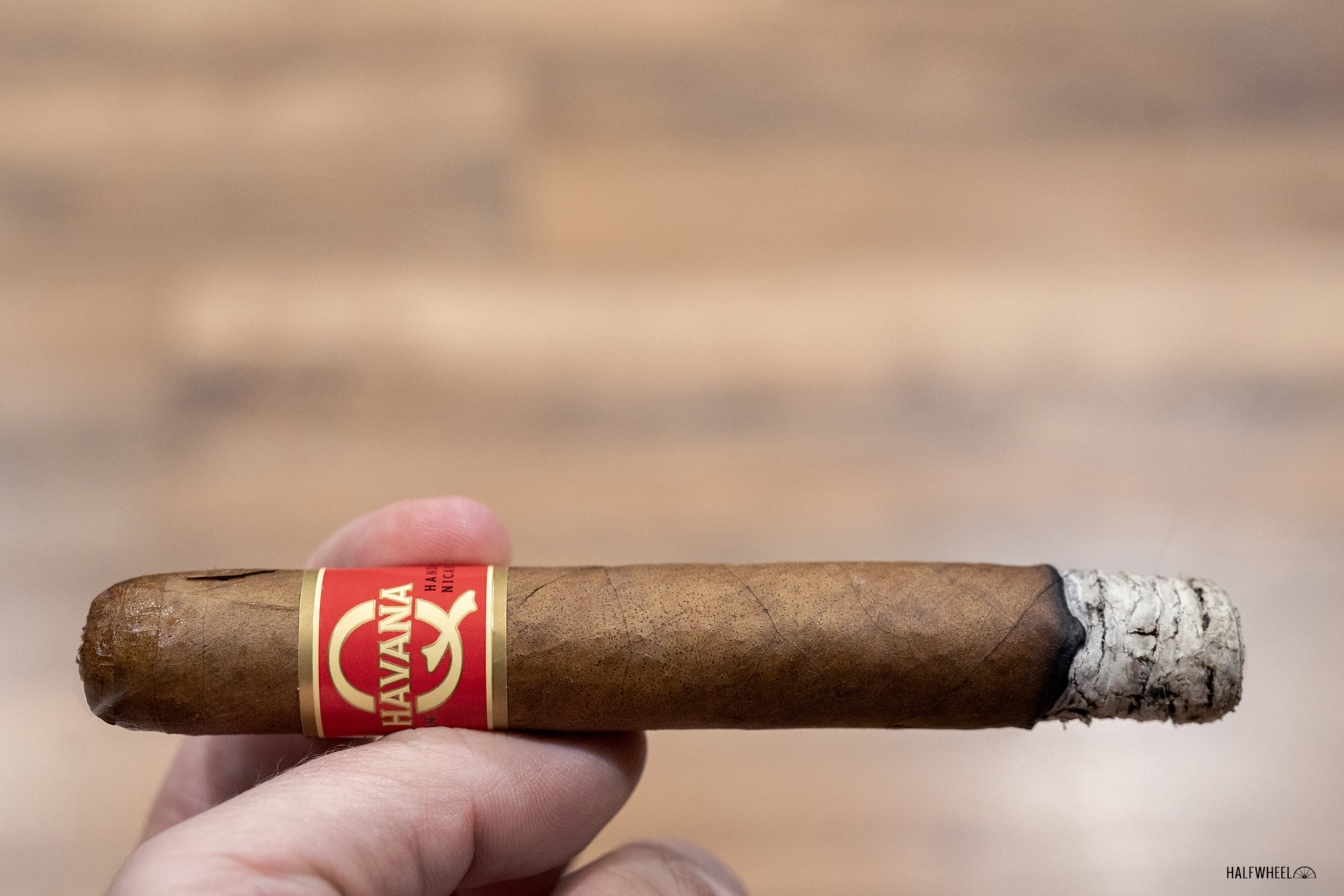
The second third of the Havana Q Double Toro sees the nuttiness continue, and while it’s a bit more flavorful in terms of intensity, it loses some of its distinctness along the way. There is still flavor, though I’m beginning to think of it more in the sense of peanut butter on wheat bread, or in the case of one cigar, the kind of dry, dusty earth of Honduran tobacco. There’s also the same kind of finishing flavor as I get from Planters peanuts, a sort of oily, slightly salty note. There’s a bit of black pepper in there as well, though it’s more of an accent than a driver of the flavor, yet retrohales can still pump out a good amount of nose tingling black pepper. As the Havana Q begins to approach its final third, the flavor gets a bit earthier, and while I didn’t notice the transition, it’s pretty clear once the earthy flavor has arrived as the cigar suddenly feels awake and alive. Both the flavor and retrohales kick up into medium-full territory, and while the body can now feel a bit thin in comparison, it is still medium to medium-plus. Construction has been very good thus far, though the fragility of the wrapper remains a concern. Thankfully combustion, draw and smoke production are all very good. Flavor is now medium-plus to medium-full, body is medium-plus and strength is building itself out of medium territory.
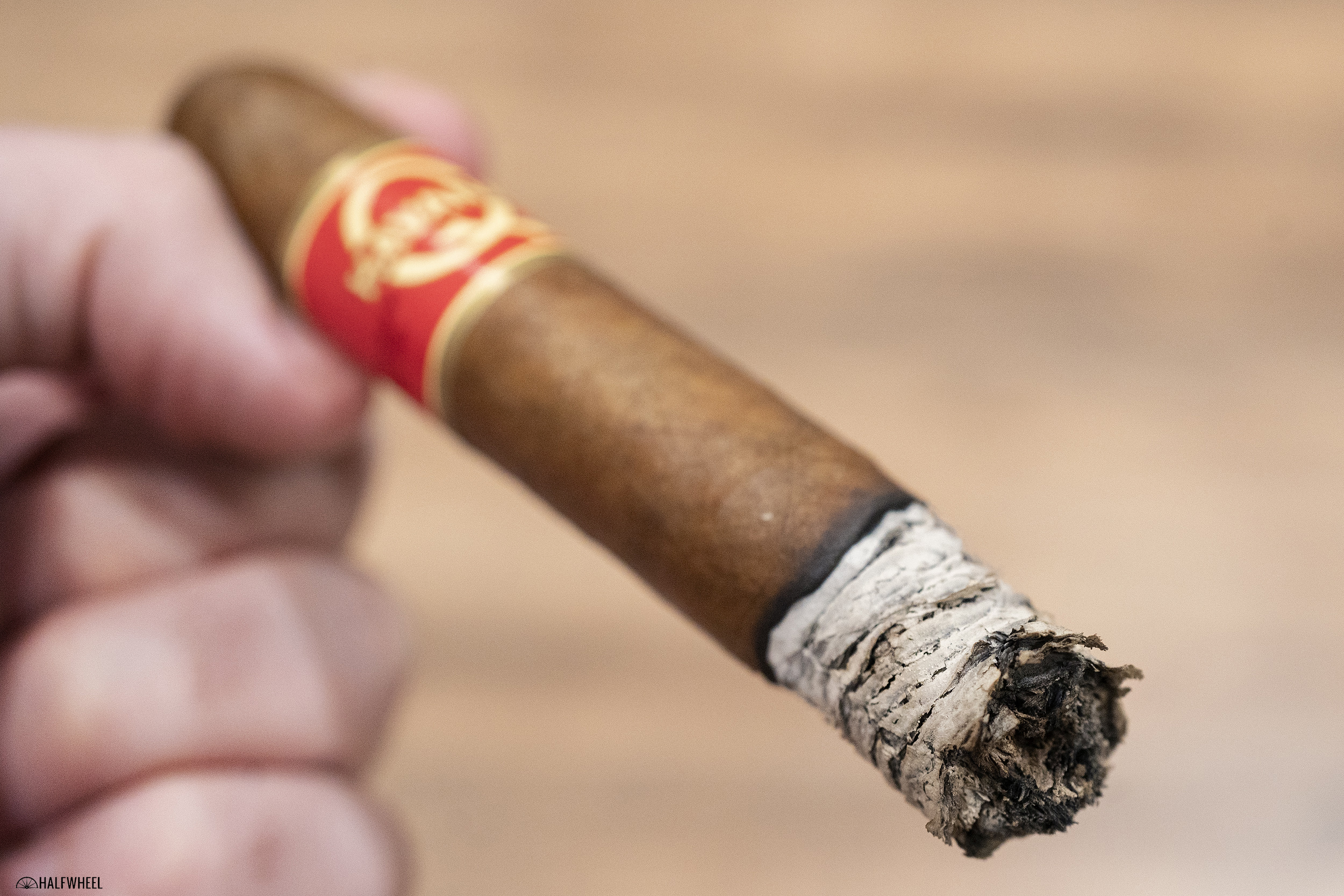
The final third begins with the earthiness continuing along while picking up a bit of heartier wood and a reemerging black pepper. While any expectations of tons of complexity or flavor from any Quorum cigar might be ambitious, the Havana Q Double Toro does an admirable job at making me forget that it is a bundle cigar for the first half of this final section. There’s still some nuttiness and a good bit of woodiness, both of which have a slight drying effect on my palate but don’t completely suck all the moisture out of my mouth. The flavor picks up a good bit of gruffness and robustness fairly quickly when there’s about two inches left in the cigar, though I can’t quite attribute it to a specific flavor as it’s almost a completely textural change. To further that change, heat comes into the profile right after that, and I’m beginning to think that the cigar might be signaling that its conclusion is approaching fairly quickly. Woodiness jumps to the front of the profile to help get the flavor out of the heavier earthiness that it has been in for a while, yet brings up the intensity a tick or two. Where the cigar stays clean and approachable is the retrohale, which leads with black pepper and finishes with warm mixed nuts and more woods. Flavor finishes medium-full, body is right behind that, and strength has nudged into medium-plus territory. Construction is still very good and doesn’t present any issues, minus any isolated issues with wrapper damage.
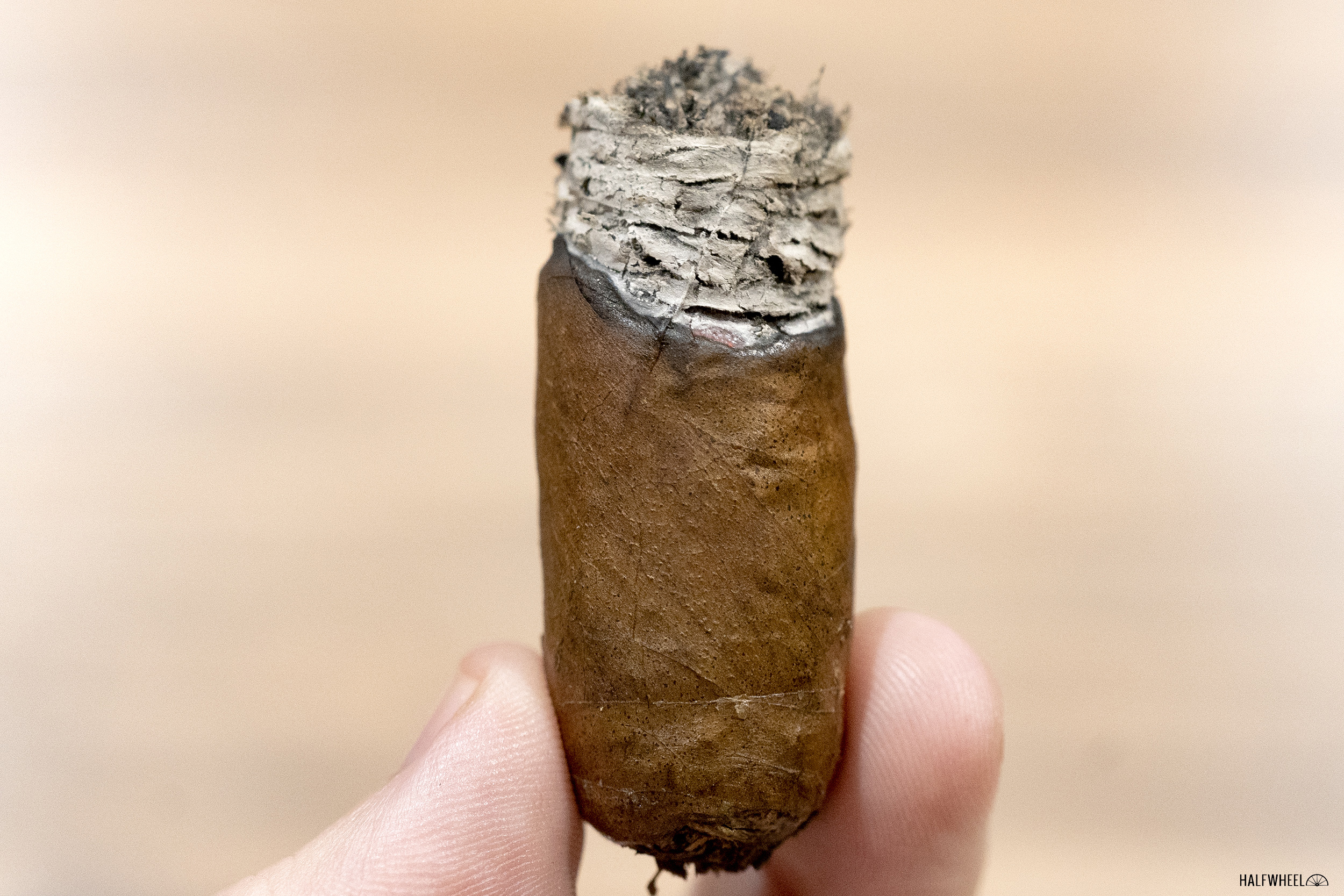
Final Notes
- I must give J.C. Newman credit on the SKU band that holds the cellophane shut. For a bundle cigar, this is really well done, and I love the image of the El Reloj clock tower on one end.
- The relative fragility of the wrapper on the Havana Q reminds me a bit of the one on the Buffalo Ten Natural Toro that I reviewed in December 2020. It’s not kid-gloves fragile, but it is fragile enough to be mindful of when handling. I mention this because both cigars use an Ecuadorian habano leaf for the wrapper.
- Each of the three cigars sustained a bit of damage to the wrapper when the bands were removed. Even waiting until the last possible moment and being as gentle as I could, a bit of the leaf was attached to the bands.
- This is a good reminder to have some cigar glue on hand if you don’t already. You can buy some commercially, or simply do what I do and make your own. It’s essentially pectin and hot water, stirred up and put in a cosmetics tube where a small brush is attached to the lid.
- Similarly, I think some extra humidity wouldn’t hurt. I’m not saying to store these at 80 percent humidity, but 70 to 72 percent might help a bit with the elasticity and durability of the wrapper.
- I really wish that I could point to a specific cause for the flavor issues in the second sample, though nothing jumped out at me at the time. I’d be curious to know how wide the spectrum of acceptable tobacco is for the Havana Q line, and if I just ended up with something on the not-so-good end of the flavor spectrum.
- That also brings up the point about price generally inferring consistency, and the discussion about whether lower costs cigars shouldn’t come with as much of an expectation of consistency. On the whole, I thought the three cigars were pretty similar, though something about that second sample was just clearly amiss.
- Value is a huge component when it comes to bundle cigars, and while all four of the vitolas are beefy and convey a sense of good size-to-price ratio, I’d really be interested to see this in a smaller size.
- I have been fortunate enough to travel to Pinar del Río in Cuba, but not yet fortunate enough to visit Ecuador’s growing regions, though that was on the agenda for 2020.
- Given Habanos S.A.’s history of trying to keep non-Cuban cigar companies from using the world Havana, I’m a bit surprised to see J.C. Newman go with Havana Q for this cigar’s name.
- None of the cigars gave me much of a nicotine hit, though one seemed close to doing so.
- J.C. Newman advertises on halfwheel.
- The cigars for this review were purchased by halfwheel.
- Final smoking time was just under two hours on average.
- Site sponsors Atlantic Cigar Co., Famous Smoke Shop and JR Cigar carry the Havana Q Double Toro.
I don't know what the expectations should be for a $3 cigar, but for the bulk of its two hour smoking time, the Havana Q Double Toro exceeded what I assume the typical premium cigar smoker would think. The flavors aren't the most complex or elegant, but they are balanced and enjoyable, and retrohales are clean and peppery enough to provide some gloss over the rougher spots. It's not until the final third that the cigar tips its hand, getting a bit too dry and earthy for my liking, and that's coming from someone with a palate that generally enjoys an earth-forward profile. The fragility of the wrapper isn't great, though it remained a minor annoyance instead of turning into a mess. If you like having some value-priced cigars in your humidor, the Havana Q Double Toro is certainly worth checking out as there are enough puffs where it easily outperforms its price tag.

